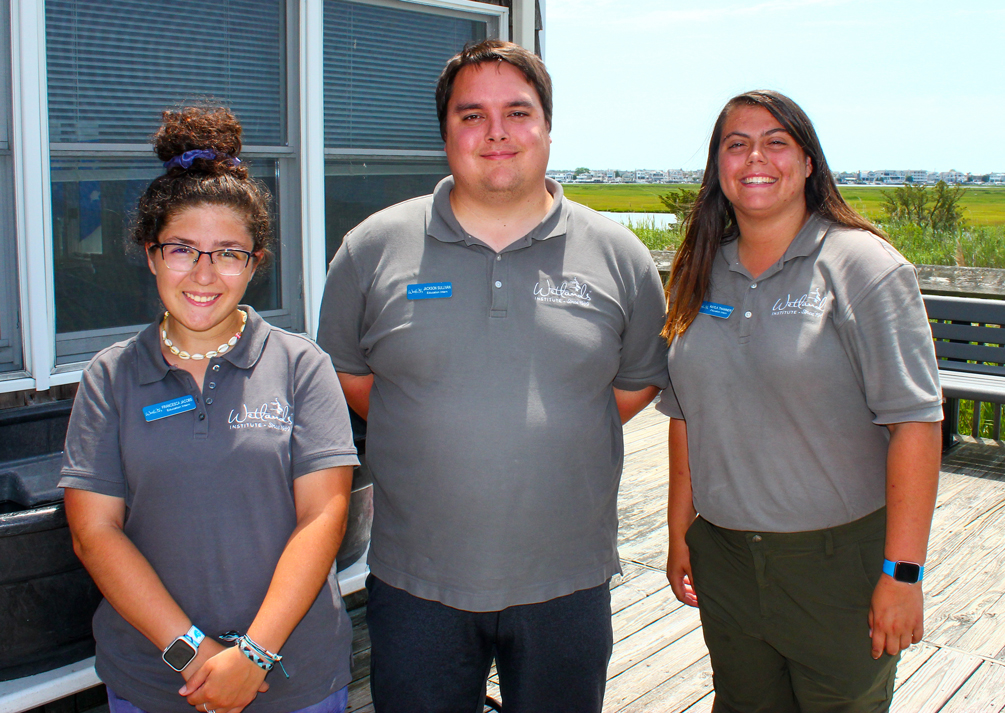
The Wetlands Institute’s Environmental Education Interns spend 12 weeks leading public education programs, while immersing themselves in the unique environment of the surrounding saltmarsh and barrier islands. They work hard and through it all develop the skills they need to continue their careers in environmental education. Each year, interns are asked to develop and implement an education project of their choosing that is personally and/or institutionally beneficial. The deliverables from their projects leave a lasting impact on The Wetlands Institute and we hope you’ll stop by to see their education initiatives in action.
Pictured left to right: Francesca Jacobs, Jackson Sullivan, Kayla Thanner
Intern Projects Overview
Francesca Jacobs (Washington College) used Procreate and Photoshop, two drawing and editing software applications, to adapt The Wetlands Institute’s Secrets of the Salt Marsh video to print format using digital media to create a series of four one-of-a-kind, hand-drawn posters. Each high-quality vinyl poster, measuring 36 inches high and 24 inches wide, highlights the key species seen in the salt marsh each season.
Jackson Sullivan (Stockton University) utilized Canva, an online graphic design tool used to create engaging visual content, to develop two sets of trivia flip cards, each containing the answers to eight questions related to horseshoe crabs and filter feeders. These trivia flip cards serve as a fun and interactive educational resource for visitors heading into Terrapin Station or the Secrets of the Salt Marsh Aquarium.
Kayla Thanner (Eckerd College) strived to close a gap in Environmental Education by introducing young adults to the animals and plants of the salt marsh through the creation of a Young Naturalist’s Guide to the Salt Marsh and Back Bays, available as part of the Virtual Wetlands Experience on The Wetlands Institute’s website. This e-book includes both pictures for identification, as well as words for learning and understanding, and in doing so is meant to allow readers of different attention spans to gain information how they would like.
